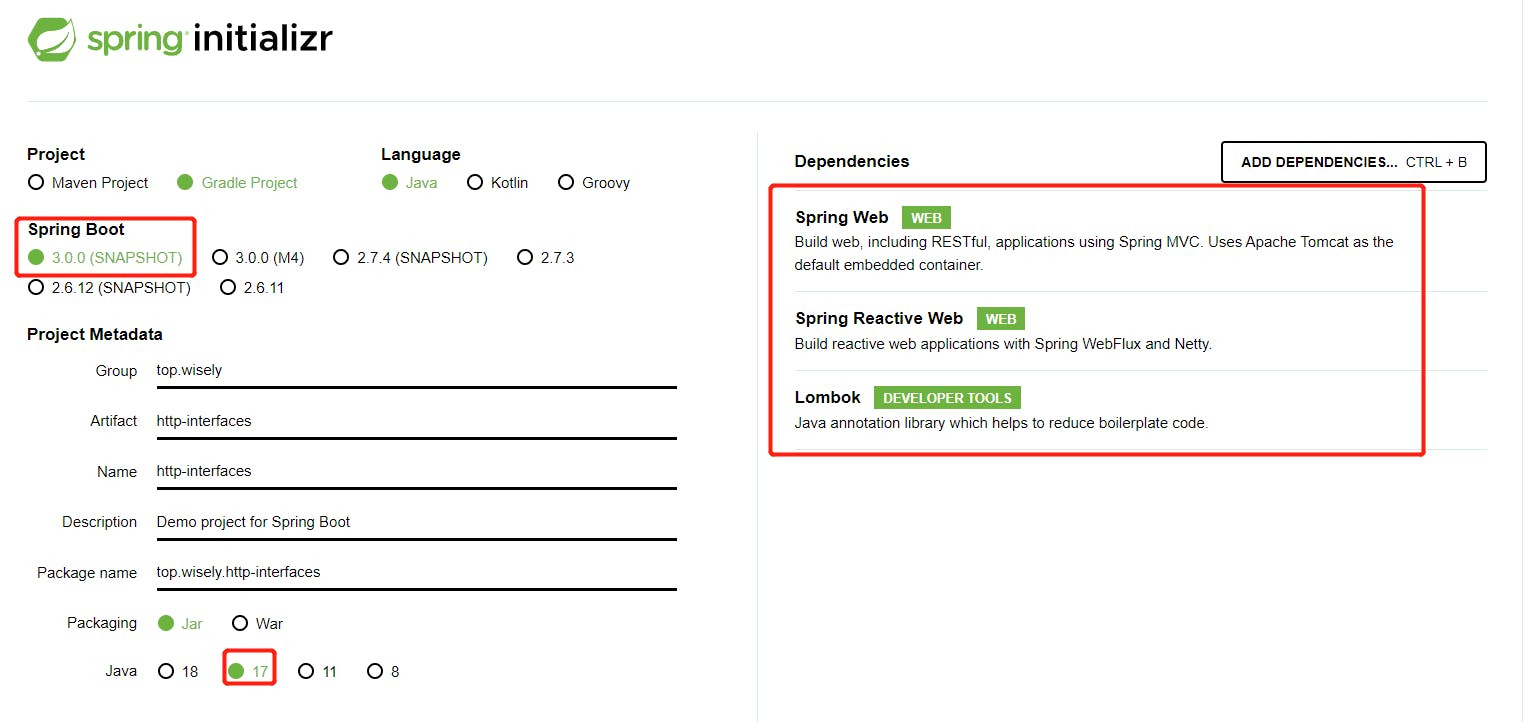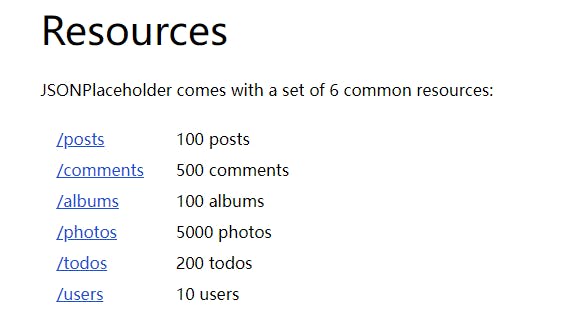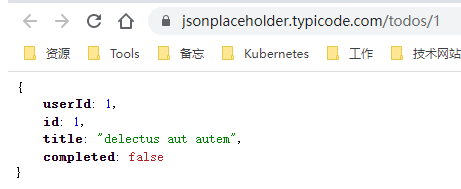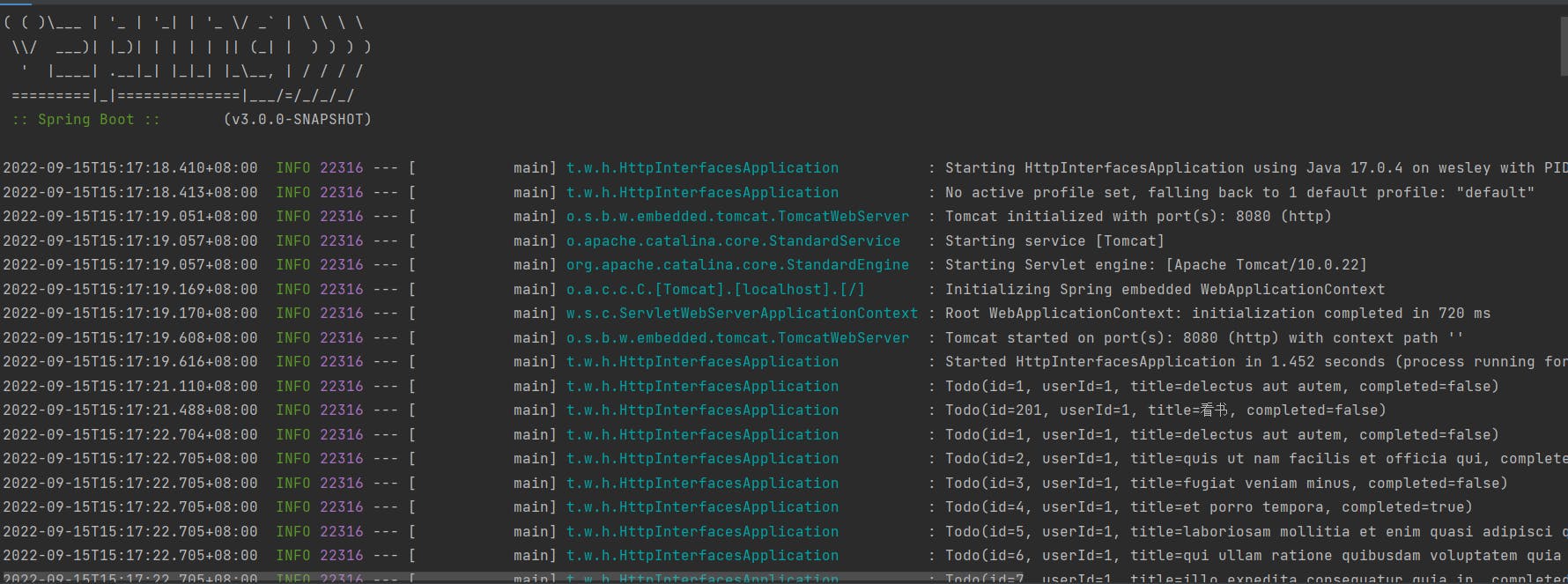在Spring 6.0之前,我们访问第三方服务或者微服务的http接口主要有这些方式:
- RestTemplate:可同步访问HTTP服务。
- WebClient:可同步或异步访问HTTP服务。
- Feign:在微服务架构中(不限于微服务),用声明式的方式访问HTTP服务。 在Spring 6.0中,我们有了一个更方便的HTTP请求的手段,HTTP Interfaces。HTTP Interfaces类似于Spring Data的Repository或者Spring Cloud OpenFeign一样,我们只需要声明接口就可以完成工作,框架会直接给我们自动代理一个实现。
在实际使用中HTTP Interfaces和Spring Cloud OpenFeign使用感受极其类似。
下面我进行一个极其简单的演示。
1、创建Spring Boot 3工程
打开start.spring.io,Spring Boot版本选择3.0.0(SNAPSHOT)(当前最新版本,若有更新版本选择最新版本),Java版本选择17(Spring Boot最低支持版本),依赖选择Spring Web、Spring Reactive Web、Lombok(此时我们还是常规使用Tomcat的同步调用,添加Spring Reactive Web是为了使用WebClient)。

2、一个在线REST HTTP服务
https://jsonplaceholder.typicode.com
提供多个REST资源。

我们可以对这些资源进行增删查改的操作,本例选用todos资源。
3、编写客户端和服务端之间的数据传值对象(DTO)

根据在线资源服务的数据结构编写DTO
@Data
@AllArgsConstructor
@NoArgsConstructor
public class Todo {
private Long id;
private Long userId;
private String title;
private Boolean completed;
}
4、编写HTTP客户端
@HttpExchange("/todos")
public interface TodoClient {
@GetExchange("/{todoId}")
Todo getTodo(@PathVariable Integer todoId);
@GetExchange
List<Todo> getTodos();
@PostExchange
Todo save(@RequestBody Todo todo);
}
这里和Spring WebMVC的用法是很类似的,不过它声明的是远程的资源,和Spring Cloud OpenFeign一样。
@HttpExchange:最通用的一个注解,在类级别将会被所有方法继承,如基础路径地址;在方法级别,需要指定具体的method类型。相当于@RequestMapping。@GetExchange:HTTP GET请求。相当于@GetMapping。@PostExchange:HTTP POST请求。相当于@PostMapping。@PutExchange:HTTP PUT请求。相当于@PutMapping。@DeleteExchange:HTTP DELETE请求。相当于@DeleteMapping。@PatchExchange:HTTP PATCH请求。相当于@PatchMapping。5、注册HTTP客户端
@Configuration public class ClientConfig { @Bean public TodoClient todoClient() throws Exception { WebClient webClient = WebClient.builder() .baseUrl("https://jsonplaceholder.typicode.com") .build(); HttpServiceProxyFactory factory = new HttpServiceProxyFactory(WebClientAdapter.forClient(webClient)); factory.afterPropertiesSet(); return factory.createClient(TodoClient.class); } }
6、演示
@SpringBootApplication
@Slf4j
public class HttpInterfacesApplication {
public static void main(String[] args) {
SpringApplication.run(HttpInterfacesApplication.class, args);
}
@Bean
CommandLineRunner clr(TodoClient todoClient){
return args -> {
log.info(todoClient.getTodo(1).toString());
log.info(todoClient.save(new Todo(null, 1L, "看书", false)).toString());
for(Todo todo : todoClient.getTodos()){
log.info(todo.toString());
}
};
}
}

结语
HTTP interfaces使用起来比RestTemplate和WebClient要简单很多,使用声明式类似于OpenFeign的方式进行远程的HTTP资源的调用,但不需要额外引用Spring Cloud OpenFeign,极大的简化了代码和提高了开发效率。

